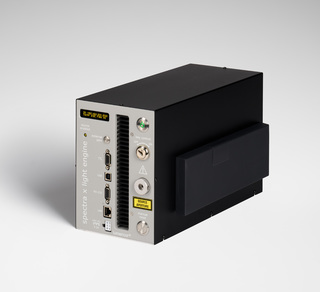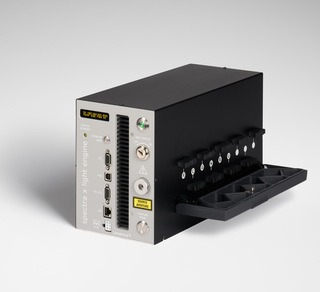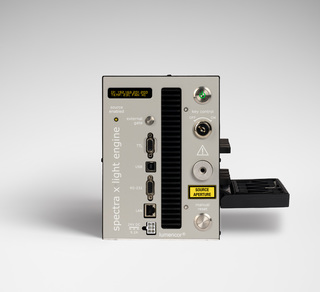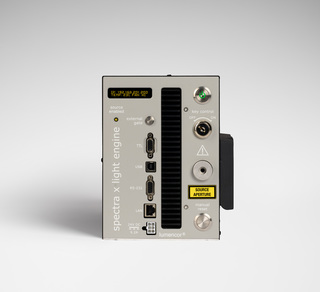SPECTRA X Light Engine
With more than a decade of proven performance, Lumencor’s SPECTRA X Light Engine is a first choice illuminator for researchers worldwide. Fluorescence microscopists value both brightness and spectral flexibility. Exchangeable filters allow for all the freedom of a breadboard excitation subsystem in a compact, easy-to-use box. This updated 2023 SPECTRA X has a lot to offer. What remains the same is SPECTRA X’s user-exchangeable bandpass filters in a compact, turnkey illuminator. Spectral output can readily be adjusted to meet experimental requirements. This feature is even more useful due to the broader spectral range now available for selection. Stability and reproducibility are also preserved.
"My experiences with Lumencor Sales and Technical Support has been great, they’re very helpful."
Brian D. Armstrong, City of Hope National Medical Center
Application Bibliography
| Application | Area Product | Reference | Date |
|---|---|---|---|
Validation of aiSEGcell protocol applied to time-lapse imaging of NF-kappa B signaling dynamics | High-Content Screening SPECTRA X Light Engine | aiSEGcell: User-friendly deep learning-based segmentation of nuclei in transmitted light images. PLoS Comput Biol (2024) 20:e1012361 D Schirmacher, U Armagan, T Schroeder et al. | 2024 |
In situ sequencing (ISS) for single-cell spatial expression profiling of the spatiotemporal cellular dynamics underlying autoimmune encephalomyelitis (EAE) evolution. | Transcriptomics SPECTRA X Light Engine | Cellular architecture of evolving neuroinflammatory lesions P Kukanja, CM Langseth, G Castelo-Branco et al. | 2024 |
Imaging intracellular neuropeptide concentrations using a genetically encoded sensor comprising vasoactive intestinal peptide receptor VPAC1 coupled to circularly permuted GFP | Pathology SPECTRA Light Engine, SPECTRA X Light Engine | Multisensory gamma stimulation promotes glymphatic clearance of amyloid. Nature (2024) 627:149–156 MH Murdock, CY Yang, LH Tsai et al. | 2024 |
Temporally multiplexed imaging (TMI) using reversibly photoswitchable fluorescent proteins | Microscopy Technique Development SPECTRA X Light Engine | Temporally multiplexed imaging of dynamic signaling networks in living cells. Cell (2023) 186:1–17 Y Qian, OT Celiker, ES Boyden et al. | 2023 |






